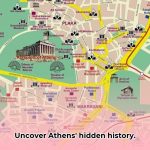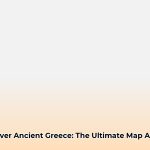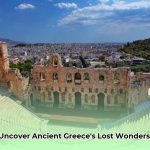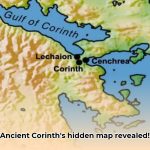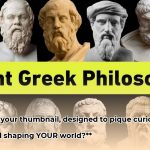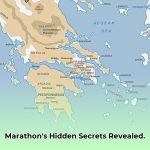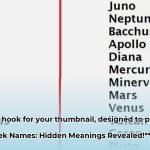The Battle of Marathon is etched in history as a David-versus-Goliath story: a small Athenian army triumphing over the mighty Persian Empire. But beyond the heroic narrative lies a complex tapestry of strategy, terrain, and enduring legacy. This article delves into the Battle of Marathon, moving beyond the familiar tales to explore the battlefield’s nuances, the Greek’s tactical brilliance, and the battle’s lasting impact, drawing upon modern archaeological findings and historical research. For a visual understanding, check out this Ancient Greece map.
Marathon Ancient Greece Map: A Battlefield of Enduring Significance
In 490 BCE, the plains of Marathon bore witness to a clash that resonated far beyond the immediate battlefield. Examining a map of Marathon from that era reveals a pivotal encounter between the Greeks and the Persian Empire. This battle not only shaped the course of ancient Greece but also left an indelible mark on Western civilization. Understanding the terrain and strategic locations through historical maps provides crucial context to the events that unfolded.
The Battlefield: Terrain, Tactics, and Turning Points
Envision a landscape stretching from the foothills to the Aegean Sea. A map of Marathon reveals a plain bordered by marshes and the sea, features that shaped the battle’s dynamics. The marshes, a subject of ongoing debate, may have impeded the Persian cavalry or served as cover for Athenian maneuvers. Archaeological discoveries, including weapons, artifacts, and burial sites, continue to refine our understanding, challenging traditional interpretations and offering new perspectives on ancient warfare.
Mapping the Marathon Run: Legend vs. Reality
The story of Pheidippides, the messenger who raced from Marathon to Athens to announce the Greek victory, is central to the Marathon legend. While the modern marathon race commemorates this feat of endurance, the details of Pheidippides’s journey remain shrouded in mystery. Did he run the entire distance non-stop, or did he receive assistance along the way? A map of Marathon, tracing potential routes, invites us to question the romanticized versions of the past and examine the historical plausibility of this iconic run. Scholarly analyses of Herodotus’s accounts, coupled with archaeological finds, offer a more nuanced perspective on this legendary event.
The Numbers Game: Reassessing the Persian Army
The size of the Persian army at Marathon has been a subject of debate for centuries. Herodotus’s account, while compelling, provides numbers that some scholars consider exaggerated. Modern historians, employing logistical analysis and archaeological evidence, propose alternative figures. These recalculations highlight the difficulties in interpreting ancient sources and understanding the scale of the conflict. Pinpointing the precise number of soldiers on each side is a challenge, given the limitations of available evidence and the potential for bias in ancient accounts.
Beyond the Battlefield: A Catalyst for Conflict and Cultural Identity
The Battle of Marathon ignited the Greco-Persian Wars, a series of conflicts that reshaped the ancient world. Located strategically on a map of ancient Greece, Marathon became a symbol of Greek resistance against Eastern expansion. The battle’s impact extended far beyond the military sphere, fostering a sense of unity among the Greek city-states and solidifying their cultural identity. While seemingly small compared to later conflicts, the Battle of Marathon’s ripple effect on Greek and Persian societies was profound.
Unveiling the Past: The Indispensable Role of Archaeology
Archaeology provides tangible evidence to complement written accounts, allowing us to reconstruct the Battle of Marathon with greater accuracy. Weapons, armor fragments, and burial sites offer insights into the battle’s tactics, the soldiers’ experiences, and the battle’s aftermath. These discoveries, when analyzed in conjunction with historical texts, provide a richer and more complete understanding of this pivotal event. Continuing archaeological excavations promise to further refine our knowledge of the battle and its context.
A Modern Legacy: The Enduring Appeal of the Marathon Race
The modern marathon race, a global phenomenon, serves as a tangible link to the Battle of Marathon. Each stride taken by runners around the world echoes the legendary run of Pheidippides, connecting them to this historical event. Comparing a modern marathon route to a map of ancient Marathon underscores the powerful connection between the past and present. This shared experience enriches our appreciation for both the athletic achievement and the historical significance of the event.
The Continuing Debate: A Living History Shaped by New Discoveries
Marathon is not a closed chapter in history but an ongoing investigation. Each new archaeological find and historical analysis adds another layer to our understanding of this ancient conflict. Examining a map of Marathon serves as an invitation to explore the battle’s enduring legacy and the questions that remain unanswered. As new information emerges, we must remain open to revising our interpretations and engaging in a continuous dialogue with the past.
Decoding Marathon’s Geography: Unveiling Terrain’s Influence on Battle Strategy
Key Takeaways:
- The gently sloping terrain of the Marathon plain hampered the effectiveness of the Persian cavalry.
- The location of the Persian infantry diminished their tactical strength.
- The constricted battlefield limited the deployment of the Persian army, giving the Greeks a strategic edge.
- The sea, while presenting an escape route for the Athenians, posed logistical challenges for the Persians.
- The landscape played a pivotal role in the Athenian triumph, demonstrating the significance of geographic awareness in military planning.
The Battle of Marathon was a contest of strategy and a struggle against the surrounding environment. The landscape was not merely a backdrop. Understanding the maps of ancient Greece provides additional context to your understanding of the battle, and is critical to any historical analysis.
The Impact of the Constraining Plain on Military Maneuvers
The gently sloping terrain of the Marathon plain significantly impacted the battle’s flow. The Persian army, renowned for its numerical superiority and cavalry, encountered unexpected limitations. The flat terrain impeded effective cavalry charges and restricted flanking maneuvers. The plain’s narrowness further constrained the Persians’ ability to fully deploy their forces.
Greek Advantage: The Phalanx Formation and Terrain
The Greek hoplites, organized in a phalanx formation, were well-suited to the terrain. Their tightly packed ranks thrived in confined spaces, and the sloping ground provided them with a defensive advantage. Their longer spears effectively countered the Persians’ shorter swords. The terrain amplified the strengths of Greek tactics.
Logistical Considerations: The Strategic Significance of the Sea and Supply Lines
The proximity of the sea also played a role in the logistical considerations of both armies. The Athenians could potentially retreat by sea if necessary, while the Persians faced the challenge of maintaining extended supply lines. A prolonged siege would have been difficult for the Persians to sustain, given their distance from their base of operations.
The Unforeseen Consequence: The Cultural Impact of a Changed Landscape
The battle’s outcome rested not only on Greek fighting prowess but also on the topography of Marathon, which altered the dynamics of the conflict. The terrain neutralized the Persians’ cavalry advantage and restricted their deployment, ultimately shifting the balance of power. The battle became less about numbers and more about tactical execution on a specific landscape.
Military strategy hinges on human intelligence, organizational efficiency, and the specific terrain. The topography was an active participant in the Battle of Marathon.
Unearthing New Perspectives on Ancient Greek Warfare: Marathon Battle Archaeology
Key Takeaways:
- The Battle of Marathon, fought around 490 BCE, is a cornerstone of ancient Greek history.
- Limited archaeological evidence at Marathon presents challenges in reconstructing the battle’s details.
- Conflicting historical accounts highlight the complexities of interpreting ancient sources.
- The battle’s lasting impact extends beyond military significance, shaping Greek identity and inspiring modern stories.
- Ongoing research, combining archaeological excavation and historical analysis, is essential for a deeper understanding.
Mapping the Battlefield: Archaeological Methods and Their Limitations
Reconstructing a historical battle relies on fragmented accounts and limited tangible evidence. The landscape has undergone considerable changes since 490 BCE due to farming, construction, and natural processes. Surviving clues—a burial mound and scattered artifacts—offer insights into this pivotal conflict. What limitations do archaeologists face in the discovery process?
Two (or More) Stories: Examining Historical Accounts
Ancient historians, like Herodotus and Plutarch, shaped our understanding significantly . Their accounts differ regarding the date, the size of the Persian army, and the battle tactics employed. Alternative accounts propose that the Persians were strategically divided or that they made critical errors. These open questions reflect the Athenian desire to craft a heroic narrative.
The Modern Marathon: A Run Through History’s Impact on Modern Events
The legendary run of Pheidippides from Marathon to Athens, announcing victory, has become a symbol of human endurance and the battle’s enduring allure. However, the veracity of this narrative has been questioned. This story, though potentially embellished, persists as a testament to the battle’s importance.
Unearthing the Evidence: The Archaeological Puzzle and Its Impact
Archaeological excavations at Marathon continue to unearth valuable artifacts. The discovery of a helmet and a skull raises intriguing questions, but their context and significance are debated. These discoveries highlight the inherent limitations of the archaeological record.
Reconciling History and Archaeology: Synthesizing Evidence for a Complete Picture
Comprehending the Battle of Marathon necessitates a meticulous approach, combining historical narratives with archaeological evidence. Considering both historical accounts and archaeological finds provides a nuanced understanding of the battle while recognizing the inherent uncertainties in interpreting past events. Are archaeological findings from battles trustworthy, and can they be used to establish a timeline of events?
Examining Terrain’s Influence: Marathon’s Geographic Impact
Key Takeaways:
- The narrow plain of Marathon significantly hindered the Persian army’s numerical strength and cavalry advantage.
- The strategically positioned Athenian hoplites used the terrain to negate Persian maneuverability.
- The terrain channeled the Persian advance, aiding the Athenian flanking maneuver.
- The battlefield’s characteristics played a vital role in the battle’s outcome, highlighting the importance of geographic awareness in ancient warfare.
A Battlefield Defined by Geography: The Marathon Plain
In 490 BCE, a vast Persian army faced a smaller Athenian force. The geography influenced the conflict and shaped the strategic dance that ensued. How did the physical attributes of the battleground affect the outcome?
The constricted plain of Marathon limited the Persian army’s ability to utilize its numerical and cavalry superiority. It confined the large Persian army, forcing them into a tighter configuration. This geographical constraint gave the Athenians a tactical advantage.
Exploiting the Terrain: Athenian Strategy
The Athenian hoplites capitalized on this confined space. Their phalanx formation was tailored to the narrow stretch of land. The Persians encountered difficulties deploying their diverse forces effectively in such a confined area. The ground itself became a weapon for the Athenians.
A Strategic Turning Point: A Flanking Maneuver and Its Impact
Herodotus recounts the Athenians used the land skillfully. They executed a flanking maneuver, exploiting the open ground on the plain’s edges. This maneuver overwhelmed the Persians and decided the battle. The terrain enabled the Athenians to execute a tactic, exploiting the Persian army’s restrictions.
Long-Term Strategy: Impact on Military Tactics
The triumph at Marathon hinged on geography, valor, and skill. The terrain transformed the battle as the shrewd use of the ground shifted the battle. This outcome stopped the Persian advance and shaped historical narratives.
- Unlock Ancient Greece Coloring Pages: Fun Educational Activities for Kids - August 12, 2025
- Unlock the Secrets of Ancient Greek Literature: A Comprehensive Guide - August 12, 2025
- Master Ancient Greece Word Search: Fun Learning Games - August 12, 2025


